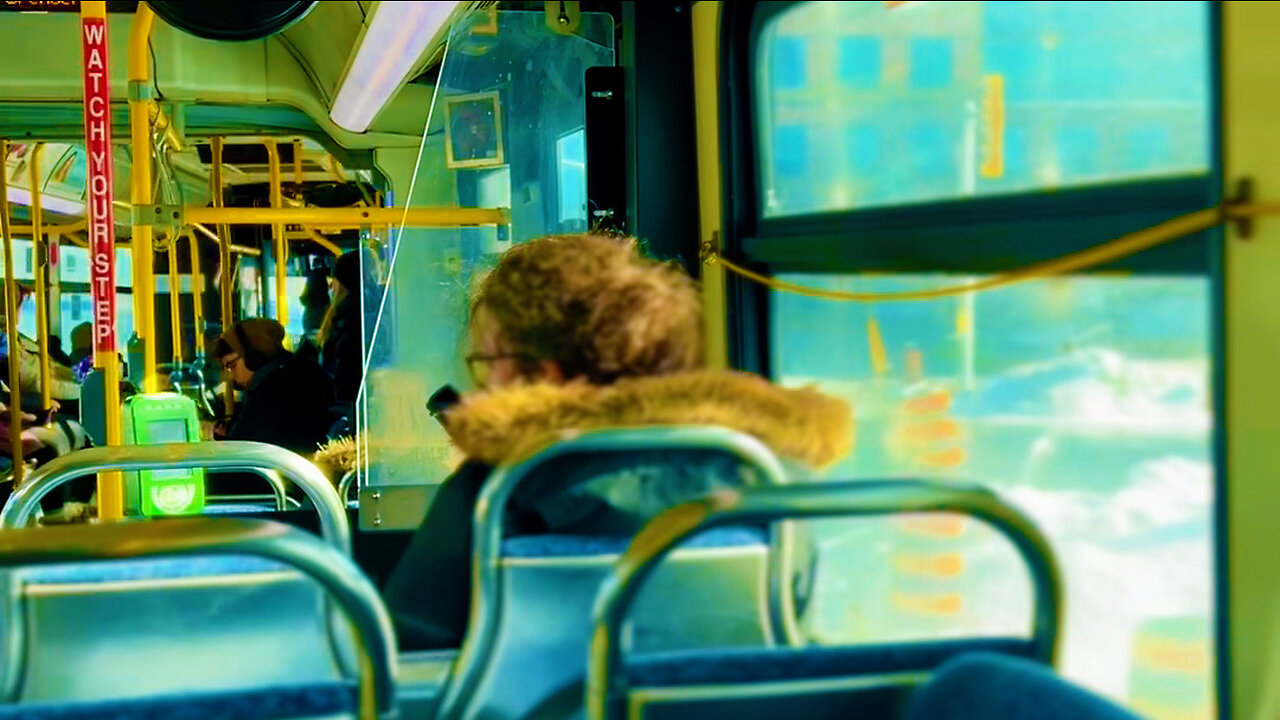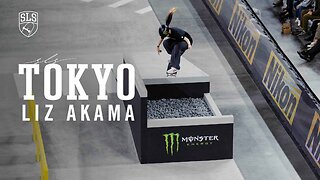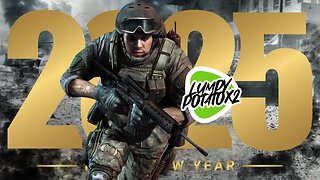Premium Only Content

Trippy Ride. Articulated bus bends its way downtown
An articulated bus, also referred to as a banana bus, bendy bus, tandem bus, vestibule bus, wiggle wagon, stretch bus, or an accordion bus, (either a motor bus or trolleybus) is an articulated vehicle used in public transportation. It is usually a single-decker, and comprises two or more rigid sections linked by a pivoting joint (articulation) enclosed by protective bellows inside and outside and a cover plate on the floor. This allows a longer legal length than rigid-bodied buses, and hence a higher passenger capacity (94–120), while still allowing the bus to maneuver adequately.
.
Articulated buses are typically 18 m (59 ft) long, in contrast to standard rigid buses at 11 to 14 m (36 to 46 ft) long.
.
Early examples of the articulated bus appeared in Europe in the 1920s. In 1938, Twin Coach built an articulated bus for the city of Baltimore; this bus, which had four axles on a 47 ft (14.33 m) long body, was only articulated in the vertical direction to accommodate steep grades. 15 examples of the "Super Twin" were built in 1948, but it was not developed further.
.
In the United States, articulated buses were imported from Europe and deployed in the late 1970s and early 1980s.
.
The main benefits of an articulated bus over the double-decker bus are rapid simultaneous boarding and disembarkation through more and larger doors, somewhat larger passenger capacity, increased stability arising from a lower centre of gravity, smaller frontal area giving less air resistance than double decker buses thus better fuel efficiency, often a smaller turning radius, higher maximum service speed, the ability to pass under low bridges, and improved accessibility for people with disabilities and the elderly.
-
 0:33
0:33
AmplifiedLIFE
10 months ago $7.40 earnedIncredible footage of a woodpecker pecking on a tree
1541 -
 13:43
13:43
Cooking with Gruel
2 days agoCreamy Saffron Risotto
100K20 -
 18:38
18:38
DeVory Darkins
1 day ago $25.25 earnedTrump Makes HUGE Announcement that may spark GOP Battle
76.2K81 -
 2:13:05
2:13:05
The Nerd Realm
14 hours ago $5.58 earnedNew Years Eve! Fortnite Hunters w/ YOU! Creator Code: NERDREALM
63.6K5 -
 11:04:44
11:04:44
FusedAegisTV
1 day agoNYE Eve! - 2025 Incoming 🎉 - 12hr Variety Stream!
129K7 -
 1:18:52
1:18:52
Awaken With JP
17 hours agoSomehow The World DIDN’T End This Year! - LIES Ep 72
164K88 -
 1:19:34
1:19:34
Michael Franzese
15 hours agoWhat 2024 Taught Us About the Future?
131K32 -
 1:48:09
1:48:09
The Quartering
15 hours agoBird Flu PANIC, Sam Hyde DESTROYS Elon Musk & Patrick Bet David & Woke Witcher?
137K78 -
 4:47
4:47
SLS - Street League Skateboarding
3 days agoLiz Akama’s 2nd Place Finish at SLS Tokyo 2024 | Best Tricks
60.5K6 -
 4:06:54
4:06:54
LumpyPotatoX2
14 hours agoHappy New Year Rumble ! - #RumbleGaming
43.9K